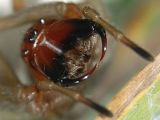Spiders may be tiny and fragile, but they cause a lot of people to run away screaming or climb on tabletops in order to get away from them. Kind of like mice. The fear or apprehension they can instill (whether or not people suffer from arachnophobia) isn't why they're on our radar now though.
Instead, a paper published in the research journal Nature has raised some really intriguing possibilities provided by the anatomy and physiology of spiders.
Not for bioengineering or genetic therapy or anything of the sort. Instead, it's wearable devices, of all things, that could be enhanced.
In a nutshell, researchers have raised the possibilities of making wearable electronic devices a lot more sensitive than they are now.
How spiders can make wearables more sensitive
Spiders have something called lyriform organs, which shake and send nervous signals whenever a nearby mate performs rubbing motions.
The purpose of lyriform organs aside, the same principle can be adapted to provide wearable devices, any devices really, with the ability to measure very faint vibrations.
The study was performed by a team of researchers from South Korea and states that an artificial system can be created.
This system uses layers of platinum and soft polymer with electricity passing through to mimic the slits of the lyriforms.
Practical applications
The new approach could allow for the creation of very, very sensitive and subtle sensors that have been either impossible to make until now, or impractical due to the costs of other methods.
A music instrument tuner could use it to detect more nuances of an orchestra's performance, a gadget could be able to detect throat movements in order to compensate for other people's ability to properly speak. A practically invisible heart rate sensor could be mounted on the wrist with no people being the wiser.
And yes, the speech gadget we mentioned would be similarly unobtrusive. It would be like having an alternative to speech and sensor implants. Considering how leery some people are of invasive procedures and long-term treatments or supervision instruments, the research is valuable for that potential alone.
Kind of ironic really, that devices of convenience and entertainment will probably end up using the ultrasensitive sensors sooner than medical devices. Then again, with stretchable artificial skin in the works, we may end up being proven wrong. The spider-based vibration detection could turn out to be the final element of touch-restoring prosthetics.

 14 DAY TRIAL //
14 DAY TRIAL // 



